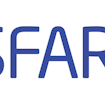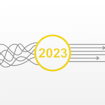
MJgraphics/Shutterstock
Note: The 2021 Bridge to Independence Award RFA is currently accepting applications.
Application submission deadline is April 12, 2021
As we search for uplifting signs in 2021, I offer a bright spot by writing about our efforts at the Simons Foundation Autism Research Initiative (SFARI) to support the up-and-coming generation of autism researchers through the Bridge to Independence (BTI) Award. The BTI Award has been a wonderful program to be a part of, so I will take a moment now to look back at what we have achieved and what we can look forward to.
While attending conferences during my first few years at SFARI, I was always struck by the amazing talent and passion of the trainees from SFARI-funded investigator labs. For some working in SFARI-funded labs, their principal investigator’s SFARI grant was sometimes their first taste of working in the autism field. Many of these postdocs soon learned to appreciate that autism research is far more complicated, intriguing and exciting than what they had heard about. I thought to myself, “These young scientists will probably do well in whatever research area they decide to focus on. How can we channel their talents to stay in autism?”
So, in 2015, SFARI launched the first BTI request for applications (RFA). I figured if we could help early-career scientists through the notoriously difficult transition from mentored training to independent research and immediately get them started on strong footing, they will be positioned to give autism research their best. Naïve? Maybe, but the signs are looking good so far.
Career impact
After five years and six RFAs, the SFARI BTI Award program now boasts 31 outstanding fellows. In many ways, they represent a microcosm of the broader SFARI scientific community. Their expertise spans the multidisciplinary spectrum that makes up autism research — from geneticists and molecular/cellular biologists to circuit/systems neuroscientists and clinicians. They also represent a mix of old and new to autism — some were former trainees from SFARI-funded labs, for others, the BTI grant will be their first foray into the field.
While the funding period itself is three years, fellows are typically part of the program for approximately five years (Figure 1). Our furthest along fellows are just now coming to the end of their BTI grants, so SFARI is beginning to get a clearer picture of how the BTI award has impacted fellows’ career trajectories. The great news is that a growing number of fellows have successfully obtained coveted grants from the National Institutes of Health (NIH), including nine NIH R01 and two NIH Director’s New Innovator (DP2) Awards. Their work has also been recognized and supported by numerous other prestigious organizations, including multiple awardees from the NARSAD Young Investigator program, Pew Biomedical Scholars program, Whitehall Foundation, Alfred P. Sloan Foundation, Allen Institute for Brain Science Next Generation Leaders Council and Chan Zuckerberg Biohub Investigator program. We are delighted about their continued successes — tangible testaments to the impact of the BTI program.

In addition to the award money, the BTI program offers networking and career development opportunities. These include participating in the annual BTI fellow retreat and SFARI science meetings. In particular, the BTI retreats, which feature a mix of data talks and advisor-led roundtable discussions focusing on practical skills for new faculty, seem to strike a chord with many of the fellows. The diversity of science discussed at these gatherings encourages them to think about new ways to study autism, and being part of a larger cohort provides a sense of community.
Hidden benefits
It has been very rewarding for me to see all these positive signs towards our intended goals for the program. But there have been unexpected upsides as well. One of the implicit benefits of designating our fellows when they are still trainees is that they can use SFARI’s commitment to them as an advantage during their faculty job searches. Because SFARI must agree that the faculty institution is providing sufficient resources to the fellow before the BTI grant can activate, our feedback on the fellows’ start-up packages can be an important source of leverage during negotiations.
In practice, SFARI’s role in these conversations is probably best described as “quiet advocate,” since I have rarely had to engage in more direct conversations with institutions. What has been an unexcepted, but powerful, upside is how SFARI’s mere presence has empowered these young scientists to advocate for themselves. I have heard more than a few times fellows telling me that they had concerns in their offers that they were hesitant to inquire about, but because of SFARI, they had the confidence to ask about it on their own.
Crucially, this confidence extends to the fellows’ perspectives as new principal investigators. One fellow told me the award gave her “big wings” when starting her lab because it gave her the freedom to build her research program quickly and focus on the science. Other fellows report similar stories, where the BTI Award greatly accelerated the start of their research and allowed them to be more assertive in hiring lab personnel and establishing projects. Today’s hypercompetitive research environment can bias young scientists towards timidity in their projects, but such conservativism is antithetical to the careers of the scientific giants who have inspired many of us. I am glad the BTI award has given the fellows confidence and support to pursue their scientific creativity during their formative years.
It is also important to mention the unexpected generosity displayed by numerous established scientists who have been so giving of their time on review committees and mentoring at retreats. We have been fortunate to have some of the most distinguished scientists in neurobiology serve as BTI reviewers and advisors. They include former NIH Institute directors, medical school deans and department chairs — in other words, scientists who are clearly not doing this for personal gain. In these cynical times, it is a comforting reminder that our civic duty to fellow scientists remains intact and that the desire to share in the excitement of the next generation of scientists still exists.
Moving forward
The BTI RFA is usually an annual event, but given the highly uncertain academic job market during the COVID-19 pandemic, I wondered out loud whether launching another RFA in 2021 would just exacerbate the backlog of stalled scientific careers. What I soon learned was that the BTI RFA was actually more important than ever. Young scientists are looking for any opportunity to distinguish themselves to the hiring committee these days. And there are many amazing young scientists out there, far more than the BTI program could ever support.
The BTI program has always recognized that diversity, defined along numerous dimensions, is good for autism science. From the beginning, the program has had a good gender ratio, which we are committed to ensuring as we move forward. Over the last few years, we have made progress in attracting more physician-scientists and increasing representation across scientific disciplines and academic institutions. Our commitment to diversity will continue and will require a thoughtful understanding of both the shared and unique challenges of various groups that have been historically underrepresented or excluded in the biomedical workforce. These include but are not limited to racial and ethnic groups, sexual orientation and gender identities, individuals with mental/physical disabilities and those from economically disadvantaged backgrounds.
Given the impact the award has had on the fellows’ careers and the directions in which the program is moving forward, I am more excited than ever to see what the next five years will bring to the BTI program, and I hope you are too.


